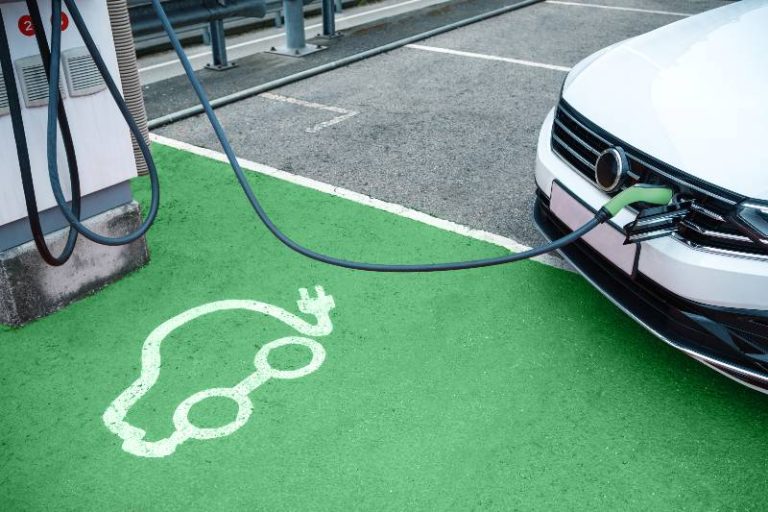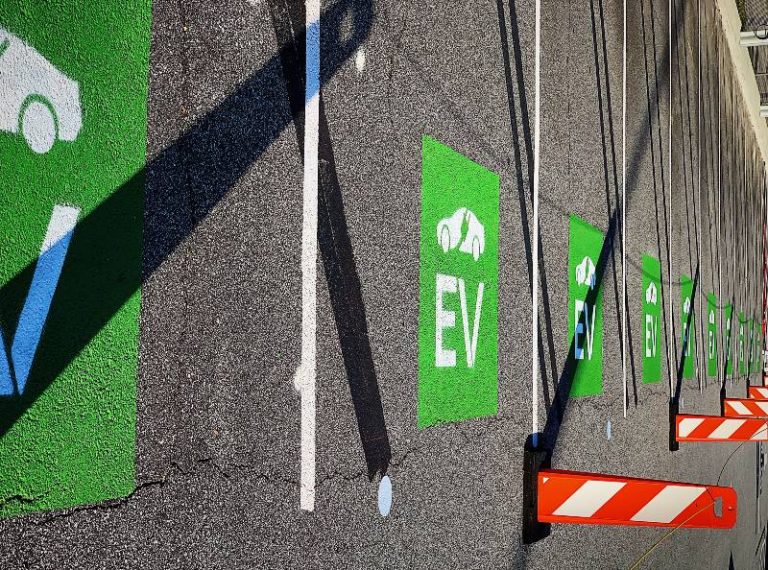A Charged Journey: The History and Evolution of Electric Cars
The historic rise of the electric car has been nothing short of spectacular. From their modest beginnings in 19th-century Germany to becoming a fully viable alternative for traditional gasoline-powered cars in modern society, electric vehicles (EVs) have come a long way. It’s not just environmental factors that are driving the switch from internal combustion engines either; EVs now offer unparalleled convenience and efficiency too. In this blog post, we’ll dive into the fascinating history of the electric and evolution of electric cars over time – tracing back to how they were first made, their changing development through various phases, and looking at what excites us about them today!
Although William Morrison developed the first electric car in the United States in 1890-91, it wasn’t until 1895 that electric vehicles caught the attention of consumers. Morrison’s car was a six-passenger wagon that could reach speeds of up to 23 kilometers per hour (14 mph). Consumer interest in electric vehicles only began to develop after A.L.
Key Takeaways
- The history of electric cars is extensive and interesting, starting in Germany during the 19th century and progressing to a practical alternative to conventional gasoline-powered vehicles.
- Electric vehicles have been developed due to concerns for the environment and the need for convenience.
- Compared to gasoline-powered vehicles, today’s electric vehicles provide better efficiency, convenience, and sustainability.
The early history of electric cars (19th century)
First electric car inventors
Did you know that the first successful electric vehicle in the United States was made by William Morrison from Des Moines, Iowa? It may have looked more like an electrified wagon than a sports car then, but it marked the beginning of an interest in electric vehicles that would last for decades to come. In fact, many early electric vehicles resembled carriages rather than the sleek cars we see on the road today. Still, Morrison’s invention would set the stage for the electric cars of the future, inspiring other inventors to follow in his footsteps and push the boundaries of what was possible with electric technology.
Early electric vehicles’ popularity and limitations
Electric vehicles (EVs) were becoming popular in urban areas in 1896. They were considered as a cleaner and quieter alternative to gasoline engine-powered vehicles, which were noisy and produced unpleasant fumes. Electric vehicles in the past had various drawbacks that made them less convenient than gas-powered vehicles for several uses. Such limitations encompassed:
- Limited range: Electric vehicles in the past could only be driven for up to 50-60 miles after a single charge, which was not practical for traveling long distances.
- Long charging times: The time it takes to charge an early electric vehicle varies from 4 to 12 hours depending on the battery size and charging technology.
- High cost: The reason why early electric vehicles were costly is that the batteries used to power them were expensive, which made them more costly than gasoline-powered vehicles.
- Limited speed: Gasoline-powered vehicles were faster than early electric vehicles, which had a maximum speed of approximately 20-25 miles per hour.
Although electric vehicles have some limitations, they continue to be favored by specific groups, such as affluent city dwellers who appreciate their quietness and absence of emissions. However, as gasoline-powered vehicles became more affordable and reliable, electric vehicles gradually lost popularity and were largely phased out by the early 1900s.
The decline of electric cars (20th century)
Introduction of internal combustion engine
Electric cars lost popularity in the beginning of the 20th century because the internal combustion engine (ICE) was introduced and became the preferred technology in the automotive industry.
At one point, ICE gasoline cars were preferred over electric cars because they had advantages such as higher speed and longer driving range. Additionally, gas cars became even more convenient to use after the invention of the electric starter motor in 1912, which contributed to their continued popularity over electric cars.
In addition, the ICE received backing from influential oil corporations and government initiatives that promoted vehicles running on gasoline, including schemes for constructing roadways and tax benefits for gasoline usage.
Electric cars were mostly replaced by gasoline-powered vehicles in the early 20th century, causing a decline in their use for several decades. However, they continued to be used for specialized purposes such as forklifts, golf carts, and low-speed vehicles.
Interest in electric cars experienced a resurgence in the 1990s and early 2000s due to growing concerns about air pollution and climate change. This was also a result of advancements in battery technology and better charging infrastructure.
Electric cars are gaining popularity as an alternative to gasoline vehicles with major automakers investing heavily in electric vehicle development.
Factors contributing to electric cars’ decline
Can you believe that electric vehicles once held the record for being the fastest cars on the road? It’s true. But something happened in the 20th century that caused a decline in their popularity as personal vehicles.
The high cost, limited speed, and short range of electric cars compared to their gas-powered counterparts made them less appealing to the average driver.
However, electric vehicles still found a place in the world of public transport as reliable sources of power for loading and freight equipment. It’s interesting to think about how the world of automobiles has changed over the years, and where it might be headed next.
Revival and modern advancements (21st century)
The pivotal role of Tesla
In recent years, there has been a renewed interest in electric cars, largely influenced by Tesla, an electric vehicle company founded by entrepreneur Elon Musk in 2003 and based in California.
The Roadster and Model S from Tesla showed that electric cars could be stylish, practical, and fast. These vehicles also had advanced charging infrastructure, cutting-edge software and automation features, and long-range batteries, which pushed the boundaries of electric vehicle technology.
Tesla’s Supercharger network enabled its users to plug-in electric vehicles and travel great distances without the concern of running out of battery power. This network of fast-charging stations is one of Tesla’s most notable contributions to the electric car industry.
Tesla was the first to use over-the-air software updates, which enabled them to enhance and add features to their cars even after they were purchased.
The success of Tesla has encouraged other car companies to invest in and create their own electric vehicles. As a result, there are now numerous electric cars available from different manufacturers, spanning from small city cars to lavish SUVs.
Electric cars have undergone modern advancements, which include improved battery technology, longer ranges, quicker charging, and more reasonable prices.
Governments worldwide have implemented policies to promote the use of electric cars through tax incentives and grants for buying an electric vehicle and constructing charging infrastructure.
Advances in battery technology
In recent years, the development and increased popularity of electric cars can be attributed to the key factor of advances in battery technology. Here are some important advancements in this field.
Lithium-ion batteries: The predominant type of battery utilized in electric cars is the lithium-ion battery. It’s high energy density and lightweight nature allow for electric cars to cover long distances on a single charge. Moreover, these batteries can be charged at a faster rate when compared to other types of batteries.
Solid-state batteries: Solid-state batteries utilize a solid electrolyte, unlike traditional batteries that use a liquid electrolyte. Although still in the initial phase, these batteries have the possibility to provide greater energy density and a longer lifespan than the presently used lithium-ion batteries.
Battery management systems: Battery management systems have improved and can now monitor important factors like temperature and state of charge to optimize electric car battery performance and prevent damage, resulting in a longer lifespan for the battery.
Fast-charging technology: Electric cars can now be charged to 80% capacity in just 20-30 minutes, thanks to fast-charging technology. This improvement makes long-distance travel more viable than ever before.
Recycling: Technology for recycling batteries has advanced, enabling the retrieval and reuse of materials from used batteries. As a result, the environmental effect of electric car batteries is reduced, and valuable resources are preserved.
As battery technology has improved, electric cars have become more practical, affordable, and eco-friendly. With further advances in battery technology, electric cars are expected to gain even more popularity in the coming years.
Growing environmental awareness
Over the years, people have increasingly become more aware of environmental issues and the urgency to take action. The awareness is motivated by concerns about climate change, air pollution, and other environmental problems that have negative effects on both humans and the planet.
People, groups, and governments are working towards being environmentally conscious and promoting sustainability by reducing waste, conserving energy, and switching to clean energy sources.
This growing environmental awareness has also led to increased demand for environmentally friendly products and services, including electric cars and renewable energy technologies.
Overall, the shift towards environmental awareness and sustainability is an important step towards creating a healthier, more sustainable future for all.
Current electric vehicle market
Market leaders
The electric vehicle market has been growing rapidly in recent years, with a number of major automakers investing heavily in electric vehicle development. Here are some of the current market leaders in electric vehicles:
- Tesla: Tesla is currently the leading electric vehicle manufacturer, with a range of electric cars including the Model S, Model X, Model 3, and Model Y. Tesla’s electric cars are known for their high performance, long-range, and advanced features, including self-driving technology.
- Volkswagen: Volkswagen has made a major commitment to electric vehicles, with plans to produce 1 million electric cars per year by 2025. Its electric cars include the ID.3 and ID.4, which are designed to be affordable and practical for everyday use.
- Nissan: Nissan has been a leader in electric vehicles since the launch of the Nissan Leaf in 2010. The Leaf is one of the best-selling electric cars in the world, and Nissan is now working on a new electric SUV called the Ariya.
- Hyundai-Kia: Hyundai and Kia are both investing heavily in electric vehicle development, with a range of electric cars including the Hyundai Kona Electric and the Kia Niro EV. Both companies have also announced plans to launch new electric models in the coming years.
Read on here about the future of EVs and Gas vehicles. From charge points to green energy, we explore the best options for sustainable and cost-effective transport in the future. Learn more about electric vehicles, their advantages over traditional combustion engines!
Government incentives and regulations
Government incentives and regulations have played an important role in promoting the growth of the electric vehicle market. Here are some examples:
- Tax credits and rebates: Governments offer tax credits or rebates to encourage people to buy electric cars, which can lower the upfront cost and make them more affordable.
- Fuel economy and emissions standards: To spur the development of more efficient and environmentally friendly cars, governments have established fuel economy and emissions standards for vehicles, which also include electric vehicles.
- Zero-emissions vehicle mandates: Certain governments have established mandates for zero-emission vehicles, which necessitate manufacturers to manufacture a particular proportion of electric or other emission-free vehicles.
- Charging infrastructure funding: Funding has been provided by governments to develop charging infrastructure, which is crucial for electric vehicles to become more widely adopted.
In promoting the growth of the electric vehicle market, the government’s incentives and regulations have played a crucial role. In the coming years, electric vehicles are expected to gain even more popularity as governments implement policies to reduce emissions and promote sustainable transportation.
Charging infrastructure
The latest set of actions by the Biden-Harris Administration is focused on creating a reliable and convenient electric vehicle (EV) charging network made for all-electric, in America. The aim is to ensure that the great American road trip can be powered by electricity.
To support President Biden’s aim of tackling the climate crisis, the United States will establish 500,000 electric vehicle chargers nationwide, both on highways and in communities. Additionally, they plan to ensure that EVs constitute at least 50% of new car sales by 2030. All this will be done while promoting a strategy to develop the local EV and EV charging industry.
Creating good-paying manufacturing and installation jobs along the way is part of the plan to achieve net-zero emissions by 2050. The Bipartisan Infrastructure Law passed by President Biden has allocated funds of $7.5 billion for EV charging, $10 billion for clean transportation, and over $7 billion for the development of EV battery components, critical minerals, and materials.
The flagship programs work together with the Inflation Reduction Act to provide more incentives for advanced batteries and for buying electric vehicles. They also aim to support the installation of more charging stations and other federal initiatives that promote domestic manufacturing and the development of a nationwide EV charging network.
American transportation is set to become cleaner, safer, more affordable, and more reliable in the future.
The President’s successful industrial strategy is highlighted by these announcements, showcasing the use of American manufacturing and good-paying union jobs to support the clean energy transition.
Future of electric cars
Autonomous vehicles
Mercedes has made a bold move in introducing L3 autonomy to the consumer market. It’s worth noting that Honda Legend was actually the first to receive approval for an L3 vehicle in 2021, but it was limited to 100 lease-only vehicles exclusively available in Japan.
According to Honda’s L3 road map, it appears that it will take a considerable amount of time before reaching the mass market. It is highly likely that other manufacturers will adopt the L3 autonomy model Mercedes. Many notable OEMs such as Hyundai-Kia, Stellantis, BMW, GM, and Honda have already announced their intentions and advancements toward an L3 rollout.
However, it is always easy for OEMs to announce plans and schedules but difficult to make the final decision to obtain L3 approval. Even Mercedes’s L3 Drive Pilot is available only for the S Class and is legally approved in very limited regions (Germany and Nevada).
Automotive companies are hesitant to introduce a large number of L3 vehicles due to public sensitivity toward the flaws in automated driving systems, in addition to legal concerns. Although there are many press releases and announcements about the launch of L3 systems, it is unlikely that L3 vehicles will be available to the general public before 2023.
However, it is likely that other car manufacturers will also introduce L3 options for their luxury vehicles in selected regions within the year, following in the footsteps of Mercedes-Benz.
Battery technology improvements
Have you heard of Etechnology? This promising technology is making waves in the world of electric cars because it can charge vehicles lightning-fast! We’re talking an 80% charge in just 72 seconds, and a full 100% charge in only 2.5 minutes. While it may not be able to power long-range EVs just yet, it’s perfect for smaller city cars, e-bikes, and even drones. Plus, it works like a charm in extreme temperatures.
Potential impact on transportation and environment
It may be time to start considering it. With the rise of electric cars, we are moving towards a future where transportation will no longer be such a significant contributor to global warming. The advent of this technology is expected to reduce our dependence on petroleum as a primary fuel source, which in turn should significantly reduce air pollution. The potential positive impact on the environment is truly remarkable, and it’s exciting to think about the possibilities for a cleaner and more sustainable future in transportation.
The History and Evolution of Electric Cars FAQs
What are the major advancements in electric vehicle technology?
Electric vehicles, also known as EVs, work differently than those running on internal combustion technology. Rather than using combustion and pressure, they rely on electromagnetism to propel themselves. These vehicles are powered by electricity which is stored in a battery and used to run an electric motor.
Who are the current market leaders in the electric car industry?
The leading manufacturer of electric cars is Tesla. They are known for producing high-performance electric cars with long-range, advanced features, and self-driving technology. Other major players in the electric car industry are Volkswagen, General Motors, Ford, and Nissan, and each of these companies is investing heavily in developing electric cars.
What government incentives and regulations support electric vehicle adoption?
Governments worldwide have applied several strategies to encourage people to use electric cars, such as tax credits and rebates for electric car buyers, setting fuel efficiency and emission standards, mandating zero-emission vehicles, financing charging station installation, and low-emission zones in urban areas. These measures aim to decrease emissions, foster sustainability, and make purchasing and using electric cars more accessible and economical to individuals.
How has charging infrastructure evolved over time?
Over time, the charging infrastructure for electric vehicles has improved significantly. At first, charging stations were scarce and limited to certain locations. However, with the increasing popularity of electric vehicles, charging infrastructure has become more abundant and convenient, offering various charging options from slow to fast, and even rapid charging.. Investments from governments and private companies in charging infrastructure have made electric vehicles more practical and convenient for consumers.
What are the future prospects for electric cars?
Over time, the infrastructure for charging electric vehicles has significantly improved. In the past, charging stations were scarce and only available in specific locations. Yet, due to the growth in the popularity of electric vehicles, charging infrastructure has become more accessible and widespread. Electric vehicles now have multiple charging options, including slow, fast, and rapid charging, thanks to heavy investments in charging infrastructure from governments and private companies. This has improved the practicality and convenience of electric vehicles for consumers.
Conclusion
electric cars have been an innovative way to help reduce emissions in the transportation sector and further promote sustainability. Their evolving landscape is one that will continue to grow as more and more people choose to transition away from gas-powered cars.
We’re only at the beginning of this journey, so it’s hopeful to see that with enough dedication there is potential for great change.
As a society, we should continually strive towards creating a better tomorrow for our planet and its inhabitants through sustainable practices such as these. If we all come together and put our efforts into making conscious changes then we can make a real difference.
Let’s keep pushing forward and continuing to bring awareness to the powerful impact of electric cars not only on the environment but on us as well – if we use them wisely now, it’ll pay big dividends in the future.
So don’t forget to subscribe to our newsletter for more information on electric cars, sustainable living, and all things eco-friendly! With your support, we can help to make a brighter tomorrow!
Thank you for taking the time to read this article. Together, let’s continue to work towards a greener and more sustainable future.






